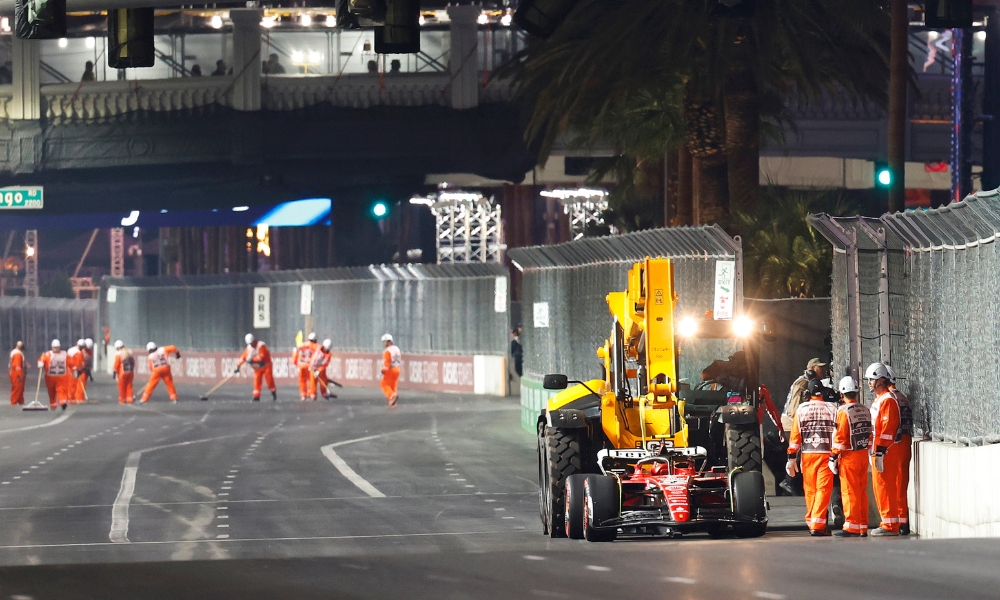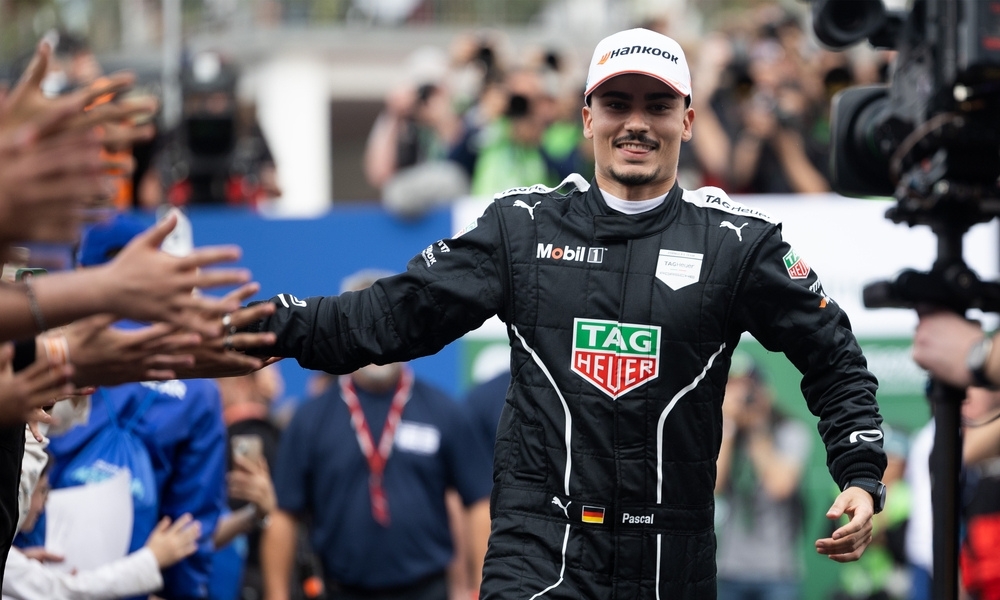From the outside looking in, there’s been a noticeable shift in how Formula E wants to be heard.
Sustainability has always been at the heart of the all-electric series’ messaging, and in many ways this remains the case.
The organisation saw impressive growth in the Girls on Track programme at last year’s select events and has opted to expand the initiative to every race this season. Formula E can also say that it has been Net Zero since its inception, and its recent Google Cloud partnership highlights the series’ emphasis on using technology to support its environmental efforts.
More recently, however, the focus has shifted. Formula E is not just a sustainable championship, but a highly competitive one. At a time when Formula One races are becoming more and more processional, the series spies an opportunity to make more noise about its electric alternative.
“I worry for the sport because Formula One has never been less competitive than it is now,” Jeff Dodds, chief executive of Formula E, explains to BlackBook Motorsport.
“I believe motorsport fans are turning off because of that, and that hurts all of us in motorsport. However, if you’re a motorsport fan and you don’t like team or single driver dominance, or you don’t like the lack of a sustainable focus, come and look at us because we deliver in all those things.”
This isn’t necessarily a case of Formula E looking to antagonise Formula One. In Dodds’ words, “if Formula One is successful, that’s good for us”. But the idea is that the size and profile of the world’s biggest motorsport series can only help to elevate that of Formula E by association.
“If Formula One is not successful, and more fans switch off from motorsport, that’s bad for us,” Dodds continues. “I want Formula One to be successful, but I am going to use them to highlight what I think are our strengths.”
What happens in Vegas
It’s hard to pinpoint exactly when Formula E decided to tweak its marketing strategy but, having been appointed as chief executive last June, Dodds has overseen the series’ shift towards a more assertive tone of voice.
When BlackBook Motorsport spoke to Dodds just after his appointment, he spoke of the “exponential opportunity” for Formula E and said that he had joined the series “bang at the right time”. And Dodds has wasted no time putting his own stamp on the series in his first year.
The first sign of the series’ change in approach came during Formula One’s inaugural Las Vegas Grand Prix, which took place on the streets of Sin City rather than at a permanent circuit. The first day of one of the most highly anticipated events in the championship’s history descended into farce when a drain cover came loose, damaging the Ferrari of Carlos Sainz.
- Formula E CEO Jeff Dodds on his new role, ambitions, and the Change. Accelerated. Live. conference
- How Formula E is balancing its sustainable mission with global expansion as it begins its Gen3 era
Fans saw just eight minutes of on-track action before the red flag swiftly fell, and the second practice session was performed in front of empty grandstands after fans were ordered to leave.
The very next day, Formula E published an article titled ‘How Formula E designs and builds FIA World Championship street circuits’, highlighting the fact that it has raced in city centres since its inception.
“Formula One has made big incursions into our space in street racing, and there’s a little bit of lightness and humour to [the article], which I think landed well,” says Henry Chilcott, chief marketing officer of Formula E.
“Of course there’s a risk, sometimes it’s not going to land well. Of course there are going to be some diehard racing fans who might dismiss it or think it’s not the right thing to do.
“But as long as we get talked about, as long as we create noise in the right way – and make our fans smile and people who aren’t fans at least take notice – then that’s probably a good thing.”

Carlos Sainz’s stricken Ferrari during the first practice session of the inaugural Las Vegas Grand Prix
‘They sneered at street circuits’
Chilcott’s point about Formula E’s ties to street racing comes at a time when more and more street tracks are being added to the Formula One calendar. Indeed, Grands Prix at temporary tracks in destinations like Miami, Jeddah, Las Vegas and Madrid have either joined or been confirmed to be joining the global motorsport series’ schedule in recent years.
Conversely, Formula E is moving in the opposite direction: six of the 17 rounds this season take place at traditional circuits. The electric series’ history, though, is rooted in street circuits, so series executives have watched on with interest as Formula One has started introducing more to its own calendar.
“What’s interesting to me is that Formula One, for a very long time, didn’t mock, but they sneered at street circuits,” Dodds recalls. “They have these big, super circuits around the world, and they kind of sneered at street circuits.
“Yet here they are on a strategy to migrate predominantly [to street circuits]. All their new races, new investments go around street circuits. We’ve been doing that since day one, so the tongue-in-cheek message was that we’ve been creating great street circuits [since the start].”
In that context, it could be argued that Formula E’s evolving communications strategy has been stirred by Formula One beginning to encroach on areas normally associated with the electric championship.
THIS MOMENT. 🤯
— Formula E (@FIAFormulaE) March 16, 2024
This is one of the greatest overtakes in Formula E history and we will not be told otherwise. #SaoPauloEPrix@SamBirdOfficial 👏 pic.twitter.com/gFENTppncK
A big bet
In amongst all this, it’s also easy to forget that Formula E has been compared to Formula One since its launch, often just because the names are so similar.
“From the day I arrived, I haven’t had the luxury of choosing whether I talk about Formula One or not,” explains Dodds. “Every single question I get asked compares us to Formula One, so that’s not my choice.
“If I just answered people’s questions, I would spend most of my life talking about Formula One, so it’s not been a conscious thing. However, we’re a business that has 386 million fans around the world, and Formula One has around 890 million fans.
“People want to compare us: they are much bigger than us, they’ve been around for 75 years, we’ve been around for nine years. It would be good business practice to therefore leverage their heritage and their success and the fact that people want to compare us to grow our sport.”
Perhaps the most public attempt to compare the two series so far was Dodds’ promise to donate US$250,000 to charity if Max Verstappen doesn’t win the drivers’ world championship this year.
While the comment came across as a swipe at the lack of competitive racing in Formula One, Dodds maintains the bet “was not meant to be disrespectful”, but rather draw attention to what Formula E can offer instead.
Irrespective of the outcome of that playful wager, it was another example of Formula E becoming more combative in its communications and exuding confidence in its own product.
Whether this overall change in strategy has a tangible impact remains to be seen, but what’s clear is that Formula E no longer seems content with being the quiet alternative to Formula One.

BlackBook Motorsport Forum is back for its 10th anniversary edition. Join us in London this April to navigate the transformation of motorsport and the trends driving the industry forward into the next decade.

